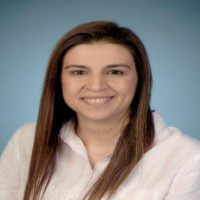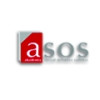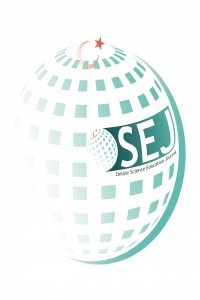Research Article
Issue Editorial Board

He is a Professor of Science (Physics) Education at Kastamonu University. He has a wide range of research interests, including determining students' grounded mental models or mental models, identifying, designing, and implementing instructions to challenge students' conceptions and using analogies and models, investigating assessment processes, and evaluating curriculums or science textbooks. He is the author of more than 100 papers and acts as editor of the 'Online Science Education Journal' and reviewer for various journals.




Aim & Scope
Online Science Education Journal, OSEJ, focuses on serving individuals, especially future generations, to acquire knowledge and skills, and adopts them as its vision. In this sense, OSEJ sees it as its mission to contribute to the development of science education activities in all levels and subject areas from pre-school to higher education and to serve all stakeholders.
OSEJ provides all kinds of scientific studies in all areas of science education.
It is obligatory that the manuscript to be submitted for publication has to be appropriate in accordance with the manuscript rules and publication conditions of our journal.
Research articles that discuss and analyze the topics from different perspectives, teaching application examples, and review studies are given priority. However, the book review that is thought to contribute to our journal's stakeholders in the field of science education, and studies on the introduction of education and didactic theories may also be published.
The evaluation process of the manuscripts sent to our journal starts and is completed electronically. The manuscript submitted by the author(s) is reviewed firstly by the editorial board in terms of appropriateness of content to the OSEJ. After this, the journal editor will appoint two reviewers with a doctorate degree. Once the two referees have issued a decision for publication as positively, the article has prepared in terms of the rules of writing and quotes of OSEJ and investigated the appropriateness of plagiarism and so on (this review process does not change the responsibility of the author).
Author Guidelines
Click here to download the template.
Manuscript Writing Rules
Title of the Study and Authorship Information
Author’s name: The author’s name and last name should be 10 points, Times New Roman font, bold. After the author’s name, institution information and e-mail address should be italic and separated from each other by a comma (,) sign.
Abstracts
Abstract: Abstract should be 10 points and Times New Roman font. “Abstract” headings should be written in left justified. Abstract describes the aim, the method, results and
conclusion and it should not exceed 100-250 words. It should not include any references.
Keywords: Keywords should be 10-points, Times New Roman font. 3-5 words that would represent the study.
Sections And Sub-Sections
All text should be written in 12 points, Times New Roman font, justified. Line spacing between the paragraphs should be in single. Paragraph indentation should be started in one-tab. It should not include space in between paragraphs. The main headings (Introduction, Method, Finding, Result and Discussion) should be written in centered, 12 points, bold and capital letters. Sub-sections headings (The second level headings) should be written in 12-points, capital for the first letters, bold, justified on the left. The third level headings should be written in justified on the left, capital for only the first letter of the first word, 12 points, bold and italic. Care must be taken to ensure that the Turkish abstract does not contain any linguistic errors.
The sections of the article should generally include the following headings:
INTRODUCTION METHOD Study Design Study Group/Participants Data Collection Data Analysis FINDINGS CONCLUSION, DISCUSSION and SUGGESTIONS REFERENCES EXTENDED ABSTRACT Purpose and Significance Methodology Results Discussion and Conclusion |
Table and Figure
Table: Tables should be numbered and on the title of the table should be written with 10 points, capital for the first letters, justified on left. Table number should be specified in bold, and the table name should be in italics. The contents of the table should be prepared in 10 points and tables to be used should be prepared in accordance with APA 6 (Tables should not include vertical lines and important headings should be separated by horizontal lines).
Figure: Figures should be numbered, the figure’s number and name should be under the figure. Figure number should be specified in bold, and the table name should be in italics
Authors need to revise their table and figure and check for APA 6 compliance.
Citation
1. In the text
In the text, first the author's surname and second the year of publication of the study are given:
1.1. Single Author
“... (Nelson, 1976)”; “According to Nelson (1976) göre ...”; “Nelson (1976) ...”
Direct quotations must be included page number.
Examples: (Centers for Disease Control and Prevention, 2005, p. 10); (Shimamura, 1989, Chapter 3)
1.2. Two Authors
When using two authors’ name within the text, should be used to word “and” between two authors. In parentheses, authors’ name is connected by a and (&) sign.
”... (Mather & Knight, 2006).”; “Mather and Knight (2006) ...”; According to Mather and Knight (2006)...”
1.3. Three-Five Authors
Last names of the authors are given according to the sequence they are given in the study:
“... (Charles, Mather, & Carstensen, 2003).”; “Charles, Mather, and Carstensen (2003) ...”; According to Charles, Mather and Carstensen (2003)...”
If it is required to cite the same study for the second time, only the first author’s last name is given together with the “et al.” expression:
“(Charles et al. 2003)”
1.4. Six and more authors
Only the first author’s last name is given together with the “et al.” (not italic) expression within the text.
“(Rosler et al. 2005)”
1.5. Institutions
When citing the institution (organizations, associations, government offices and study groups…), its full name is written within the text.
In some cases, group or institutional author’ name is used full at the first time, is used abbreviation at the second time within the text.
In case of lengthy names, easy to understand or known abbreviation, should be used abbreviation. In case of short name or unknown abbreviation, should be used full name each time.
1.6 Two or more works by the same author
1.6.1. Works published in different years
When citing two or more works written by the same author(s), the author’s surname is written once and the publication years are taken into consideration. References to the works that are currently in press are left to the end.
Example: (Gogel, 1990, 2006, in press)
1.6.2. Works published in the same year
When citing two or more works written by the same author(s), the year is followed by a, b, c and so on. This lettering is also specified in the reference list.
Example: Many studies (Derryberry & Reed, 2005a, 2005b, in press-a; Rothbart, 2003a, 2003b)
1.7. Citing works by different authors in the same parenthesis
While citing the works by different authors in the same parenthesis, the authors’ surnames are listed in alphabetical order and a semicolon is used between different authors.
Example: In many studies (Miller, 1999; Shafranske & Mahoney, 1998)
1.8. Citing secondary sources
If the original work is not accessible or it is not available in English, the original work is written in the text and the reference is given to the secondary source.
Example: If Allport’s diary is cited in Nicholson’s work and the diary has not been read, it should be cited as “Allport’s diary (as cited in Nicholson, 2003)”.
2. Reference list
At the end of your paper, and before the appendices (if any), the sources by authors or institutions should be given in alphabetical order, taking into account the first letter of the first author’s surname and the names of the institutions.
The references should be written in 10 pt. and without spacing.
Only the first word and proper nouns (if any) in the title and sub-title of periodicals should be capitalized.
The title of periodical and punctuation marks should never be written in italics.
The pages should be written as “32-50” instead of “p.32-50”.
All lines after the first line of each entry can be indented 1.5 cm from the left margin.
SAMPLE SOURCES
2.1. Article with single author
Basic citation format for articles:
Author’s Surname, First Initial. Second Initial. (Year). Title of article. Title of Journal, volume number(issue number), pages.
Anderson, A. K. (2005). Affective influences on the attentional dynamics supporting awareness. Journal of Experimental Psychology: General, 154, 258-281.
2.2. Article with two authors
Light, M. A, & Light, I. H. (2008). The geographic expansion of Mexican immigration in the United States and its implications for local law enforcement. Law Enforcement Executive Forum Journal, 8(1), 73-82.
2.3. Article with three to six authors
Carretie, L. Hinojosa, J. A, Martin-Loeches, M., Mecado, F., & Tapia, M. (2004). Automatic attention to emotional stimuli: Neural correlates. Human Brain Mapping, 22, 290-299.
2.4. Journal articles in press (accepted for publication)
Briscoe, R. (in press). Egocentric spatial representation in action and perception. Philosophy and Phenomenological Research. Retrieved from http://cogprints.org/5780/1/ECSRAP.F07.pdf
2.5. Books
2.5.1. Book with single author
Basic citation format for books:
Author’s Surname, First Initial. Second Initial. (Year). Title of book. Location: Publisher.
Çepni, S. (2012). Araştırma ve proje çalışmalarına giriş. Trabzon: Celepler Matbaacılık.
2.5.2. A Translation
Jenson, E. (2006). Beyin uyumlu öğrenme (A. Doğanay, Çev.). Adana: Nobel Yayınevi. (Original printing, 1999).
2.5.3. Article or chapter in an edited book
Yücel, C. ve Gülveren, H. (2006). Sınıfta öğrencilerin motivasyonu. M. Şişman ve S. Turan (Ed.), Sınıf yönetimi içinde (s. 74-88). Ankara: PegemA
2.6. Works downloaded
MEB, (2005). PISA 2003 projesi: Ulusal nihai rapor. Retrieved July, 9, 2009 from http://earged.meb.gov.tr/pisa/dokuman/2003/ rapor/PISA_RAPOR_2003.pdf.
2.7. Lecture/Seminar/Conference presentation
2.7.1. Works presented
Basic citation format:
Author’s Surname, First Initial. Second Initial., Author’s Surname, First Initial. Second Initial. (Year, Month). Title of work. In First Initial, Second Initial, Surname (chairperson), title of the event. Name of the organizing body, Location.
Muellbauer, J. (2007, September). Housing, credit, and consumer expenditure. In S. C. Ludvigson (Chair), Housing and consumer behavior. Symposium conducted at the meeting of the Federal Reserve Bank of Kansas City, Jackson Hole, WY.
2.7.2. Works published in conference proceedings
Herculano-Houzel, S., Collins, C. E., Wong, P., Kaas, J. H., & Lent, R. (2008). The basic nonuniformity of the cerebral cortex. Proceedings of the National Academy of Sciences 105, 12593-12598. doi: 1 0.1 073/pnas.08054171 05
2.8. Thesis
Basic citation format for master’s and doctoral theses, published
Author’s Surname, First Initial. Second Initial. (Year). Title of thesis (Doctoral thesis /master’s thesis). Name of database, Accession or order number.
Basic citation format for master’s and doctoral theses, unpublished
Author’s Surname, First Initial. Second Initial. (Year). Title of thesis (Unpublished doctoral thesis/ master’s thesis). Name of Institutions, Location.
Güneş, G. (2010). Öğretmen adaylarının temel astronomi konularında bilgi seviyeleri ile bilimin doğası ve astronomi öz yeterlilikleri arasındaki ilişkinin incelenmesi (Unpublished doctoral thesis/ master’s thesis). Çukurova Üniversitesi, Adana.
Example
Name 1: National Institute of Mental Health (1999)
First use: (National Institute of Mental Health [NIMH], 1999)
Subsequent use: (NIMH, 1999)
Name 2: University of Pittsburgh (1993)
All uses within the text: (University of Pittsburgh, 1993)
Ethical Principles and Publication Policy
Content, volume, language
OSEJ is a peer-reviewed journal, which includes translated works, book reviews, and original research and review articles reporting qualitative, quantitative, or mixed-method studies in the field of science education. It is published once every 6 months, thus twice a year (June and December). Articles can be submitted in Turkish or English language. As of 2020, only English articles are considered.
Responsibility and copyright
The authors are responsible for the contents and appendices (pictures, drawings, maps, documents, etc.) included in the articles submitted to OSEJ. It is assumed that the authors submitting their manuscripts have accepted this responsibility.
No contract is required for the transfer of copyright from authors. It is regarded that the authors of the manuscripts that are submitted and accepted after the reviewing process transfer all copyrights to OSEJ. The authors are included in the publication process by agreeing to hand over all copyrights to OSEJ.
Manuscripts may not be published elsewhere without written permission from the OSEJ editor.
For translated works, the translator should receive permission from the author(s) of the relevant article. Copyright costs for translated articles are to be covered by the translator.
Publication process
The manuscripts submitted to OSEJ must not have been previously published or submitted to be published in any printed/digital publications. The publication process shall be immediately canceled if it is found that the manuscripts submitted to OSEJ and taken in the reviewing process have been submitted to another publisher and/or have been previously published in the same or similar format.
Reviewers are appointed for the manuscripts that are approved by the Editorial Board after the preliminary examination regarding form and content. The manuscripts that are not approved by the Editorial Board shall be rejected.
Each article is sent to two reviewers. If one of the reviewer’s reports is negative, the manuscript is sent to the third reviewer. In accordance with the reviewers’ reports, it is decided that the manuscript should be published, revised, or rejected. The authors are notified of this decision.
In case of corrections given to the manuscript, the corrections must be made within the period specified by the Editorial Board and sent to the Board. The manuscripts that are not revised in time shall be rejected.
All submitted manuscripts must be prepared in accordance with OSEJ manuscript guidelines.
The authors of the manuscripts submitted in Turkish should be taken the spelling guide by the Turkish Language Association into account.
Language competence for the manuscripts submitted in English is primarily determined by the Editorial Board. The manuscripts that are considered inadequate in terms of language, regardless of content, are sent back or rejected. Prior to their submission, authors are advised to have their manuscripts proofread.
The appropriateness of the sections written in English (short and extended abstracts) for the manuscripts in Turkish is primarily checked by the Editorial Board. The manuscripts tha
Ethics
All authors must comply with both national and international academic, scientific ethical rules. OSEJ follows the publication process within the framework of Law No: 5846 on Intellectual and Artistic Works in Turkey. OSEJ has the right to protect its legal rights on the authors who do not fulfill the requirements of the TR rules of law. The authors have unilateral responsibility for the issues such as citations and plagiarism within the framework of the relevant law.
In the manuscripts prepared from the master’s or doctoral theses, the authors must state that the manuscript is prepared from such study. Otherwise, it is considered within the frame of plagiarism. In the name order, the name of the owner of the thesis is written first; the supervisor and other authors cannot be written before the owner of the thesis. The contribution of authors other than the owner of the thesis and the supervisor is stated in the manuscript.
Price Policy
OSEJ does not require publication fees from the authors.
Indexes
Citation Indexes
Other Indexes
Journal Boards
Journal Owner
Chief Editor

He is a Professor of Science (Physics) Education at Kastamonu University. He has a wide range of research interests, including determining students' grounded mental models or mental models, identifying, designing, and implementing instructions to challenge students' conceptions and using analogies and models, investigating assessment processes, and evaluating curriculums or science textbooks. He is the author of more than 100 papers and acts as editor of the 'Online Science Education Journal' and reviewer for various journals.
Editors




He is a Professor of Science (Physics) Education at Kastamonu University. He has a wide range of research interests, including determining students' grounded mental models or mental models, identifying, designing, and implementing instructions to challenge students' conceptions and using analogies and models, investigating assessment processes, and evaluating curriculums or science textbooks. He is the author of more than 100 papers and acts as editor of the 'Online Science Education Journal' and reviewer for various journals.
Language Editor

Editorial Board



Prof. Dr. Soner YAVUZ, 2000 yılında Hacettepe Üniversitesi, Eğitim Fakültesi Kimya Öğretmenliği Lisans programını, 2002 yılında Yüksek Lisansını, 2006 yılında doktorasını yine Hacettepe Üniversitesi, Fen Bilimleri Enstitüsü, Kimya Eğitimi alanında tamamlamıştır.
2001-2006 tarihleri arasında Hacettepe Üniversitesi, Eğitim Fakültesi, OFMA Bölümü, Kimya Eğitimi Anabilim Dalında araştırma görevlisi olarak çalışmıştır. 2006 yılı itibariyle Zonguldak Bülent Ecevit Üniversitesi, Ereğli Eğitim Fakültesinde Öğretim Üyesi (Yrd. Doç. Dr.) olarak çalışmaya başlamıştır. 2011 yılı Eylül ayında Doçent, 2017 yılı Şubat ayında Profesör unvanını almıştır.
Yavuz, şu ana kadar 16 yüksek lisans tezini tamamlatmış, 1 adet yüksek lisans tez çalışmasında danışmanlığı devam etmektedir. Uluslararası indekslerde taranan hakemli dergilerde 23, ulusal indekslerde taranan hakemli dergilerde 9 araştırma makalesi bulunmaktadır. Uluslararası kongrelerde 18, Ulusal kongrelerde 36 bildirisi bulunmaktadır. 6 adet projede (Alt yapı, BAP, Güdümlü Proje, Hibe Proje) yürütücülük ve yardımcı araştırmacılık görevlerini yürütmüştür. Öğretmen yetiştirme, alan eğitimi, kimya eğitimi ve fen eğitimi alanları başlıca araştırma ve çalışma alanıdır.

Prof.Dr. (Amasya Üniversitesi)

.




























